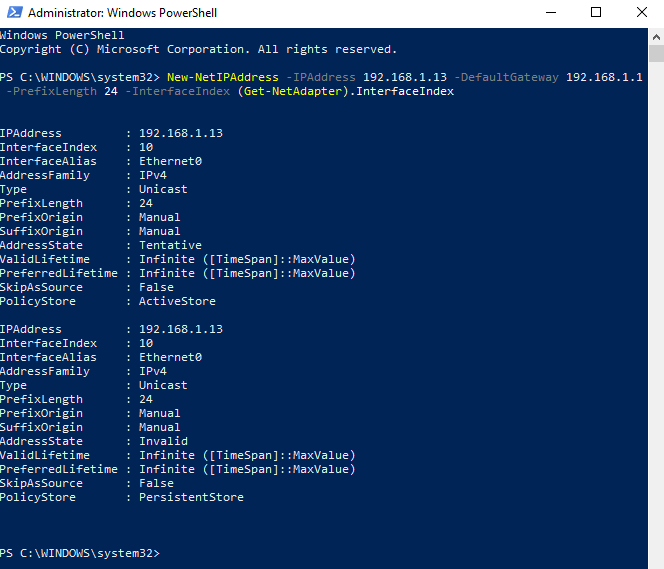Configure Static IP using PowerShell
So let us dive right in. To start, make sure you open an administrator PowerShell window, otherwise you will get an Access is Denied error when trying to run the command below.We will be using two PowerShell commands, New-NetIPAddress and Set-DNSClientServerAddress.
On the server that we want to configure, we open PowerShell and type the below command:
New-NetIPAddress –IPAddressHere is an example below:-DefaultGateway -PrefixLength -InterfaceIndex (Get-NetAdapter).InterfaceIndex

New-NetIPAddress –IPAddress 192.168.1.13 -DefaultGateway 192.168.1.1 -PrefixLength 24 -InterfaceIndex (Get-NetAdapter).InterfaceIndexAll the arguments are self-explanatory, apart from the InterfaceIndex one. Over here instead of putting in the numerical value of the Interface Index, I just ran the Get-NetAdapter command inside my current command with filtering to output only the integer value of the Interface Index.
If you have multiple network adapters on your system, you can remove the function and simply enter the numerical value corresponding to the desired interface.
If the command completes successfully, we should get the result as shown below:

Now we have our IP Address, Subnet Mask and Default Gateway configured. However, one thing is missing. These are the DNS Server addresses.
To configure the DNS Server addresses, we run the following command:
Set-DNSClientServerAddress –InterfaceIndex (Get-NetAdapter).InterfaceIndex –ServerAddressesIP1 is the primary DNS Server, IP2 is the secondary and all the others are the third and so forth., , etc.
Here is an example:

Set-DNSClientServerAdress –InterfaceIndex (Get-NetAdapter).InterfaceIndex –ServerAddresses 192.1.68.1.1
No comments:
Post a Comment